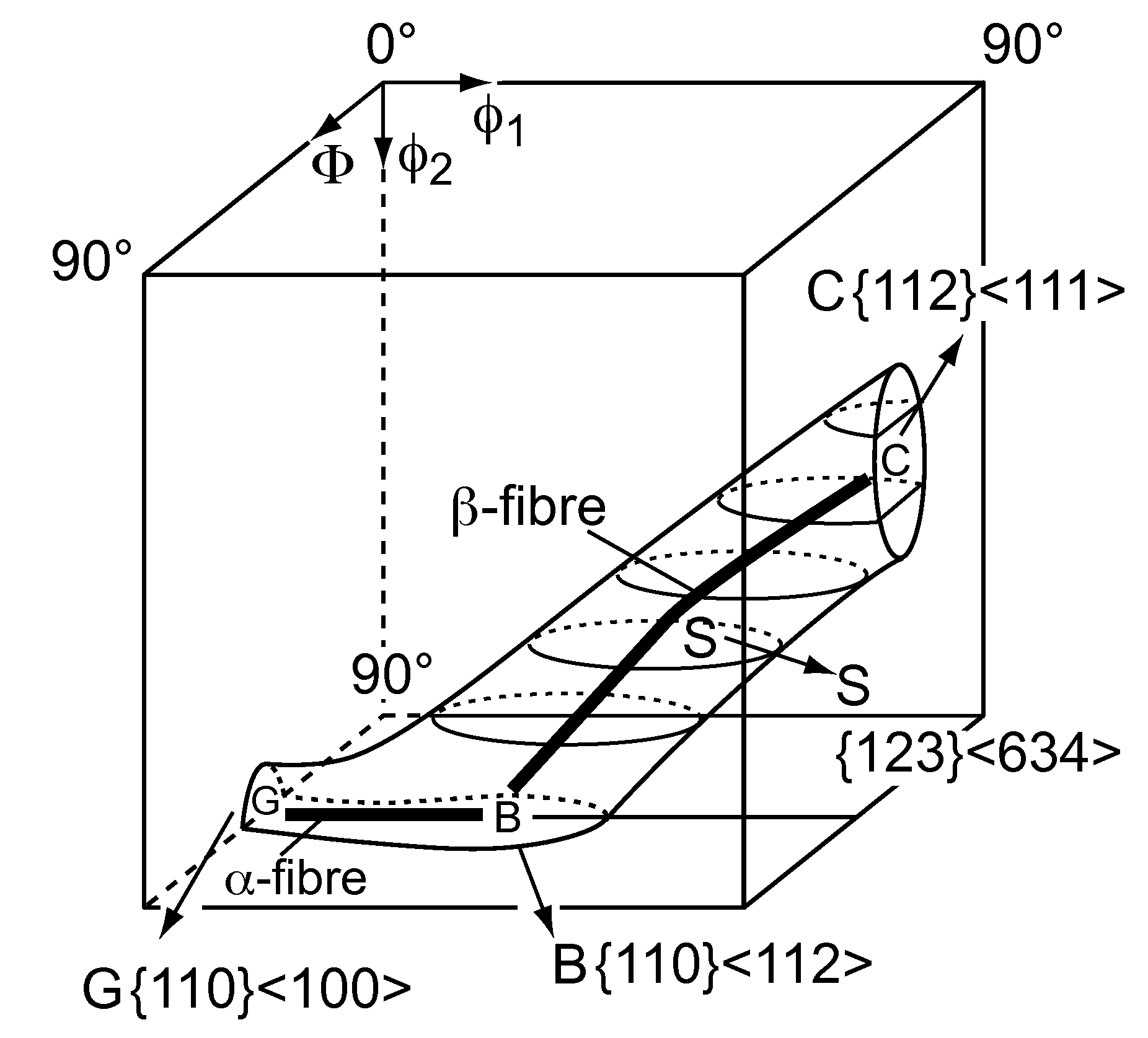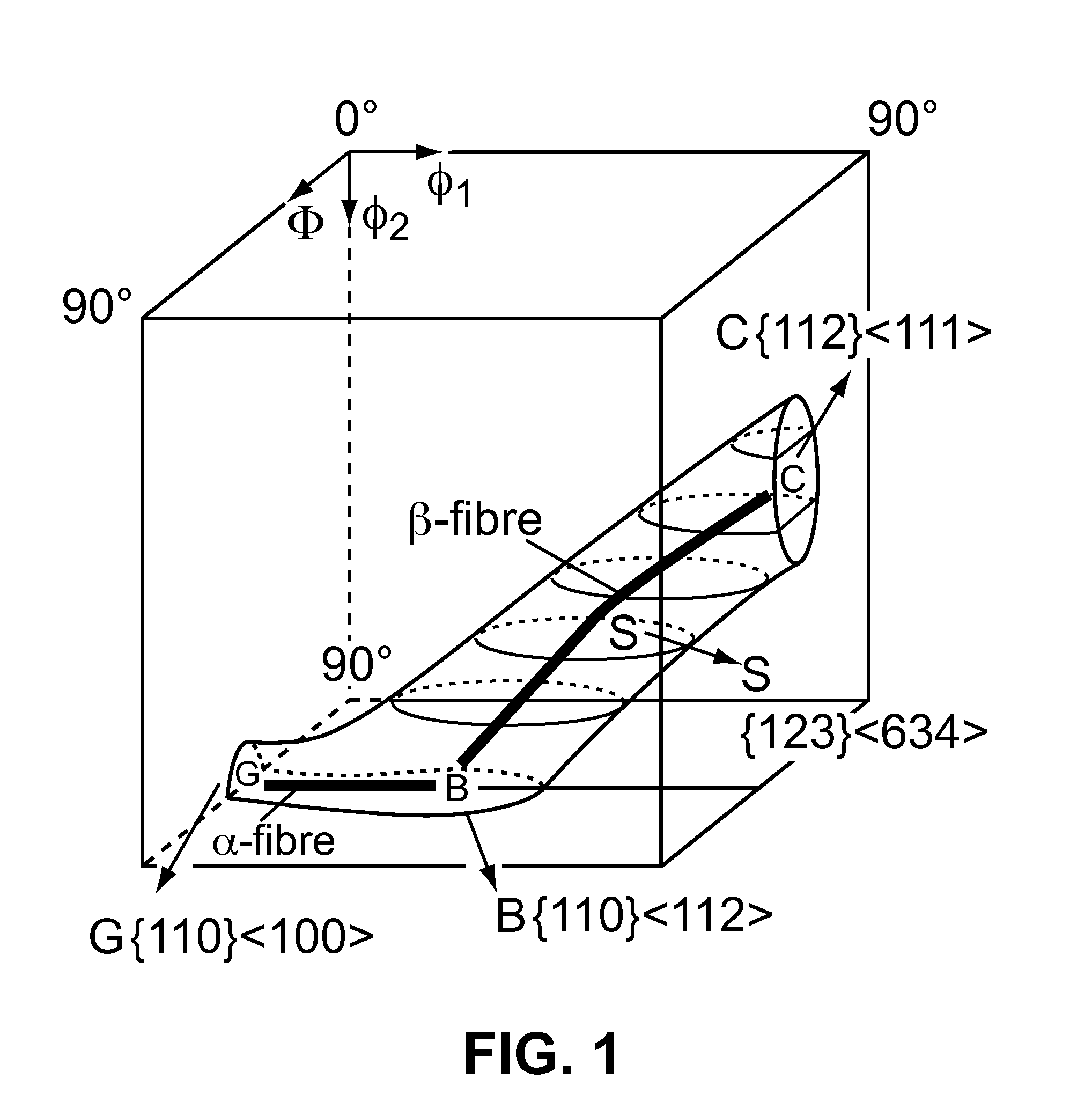Strong, non-magnetic, cube textured alloy substrates
a technology of alloy substrates and substrates, applied in the direction of crystal growth process, transportation and packaging, chemistry apparatus and processes, etc., can solve the problems of high ac losses, difficult deposition of buffer layers, and misorientation of superconducting layers
- Summary
- Abstract
- Description
- Claims
- Application Information
AI Technical Summary
Benefits of technology
Problems solved by technology
Method used
Image
Examples
example i
[0092]A bar of Ni-9.3 at % W was successively rolled to total deformations greater than 95% by heating the Ni-9.3 at % W bar in a box furnace at 500° C. followed by rolling. Upon touching the rolls, the temperature of the NiW alloy was rapidly reduced and estimated to be about 200° C. A 1-meter tape exhibiting Cu-type rolling texture was obtained, with no α-fiber present, as shown in the ODF in FIG. 5a and the (111) pole figure in FIG. 5b.
example ii
[0093]Tapes made in accordance with Example I were annealed under conventional conditions, including temperatures of about 1100° C., 1200° C., and 1300° C. Prior to recrystallization annealing, the tapes were chemically etched in a suitable acid solution to remove the surface layers which may contain some embedded oxide particles produced during the hot-rolling process. The chemical etching is done to remove such layers since such particles can inhibit grain growth and recrystallization by effectively pinning the grain boundaries. A biaxial texture was obtained, as shown in FIGS. 6a, 6b, 6c, which show (111) pole figures for NiW. FIG. 6c shows that a clean cube texture is obtained. The percentage cube texture in FIG. 6c is 97% cube texture. FIG. 7a shows a (111) phi-scan or the in-plane texture of the substrate for which the (111) pole figure is shown in FIG. 6c. A FWHM of the phi-scan of 8° is obtained. FIG. 7b shows the rocking curve or the out-of-plane texture of the substrate fo...
example iii
[0094]Annealed tapes made in accordance with Examples I and II were tested for suitability of epitaxial deposition of standard buffer layers of Y2O3 / YSZ / CeO2. A Ni-9% W coating was epitaxially deposited on a cube textured Ni-3 at % W substrate. Table 1 shows the quality of biaxial texture of the Ni-9 at % W coating at various positions along the length. Δω refers to the FWHM of out-of-plane texture in the substrate and Δφ refers to the FWHM of the in-plane texture in the substrate.
TABLE 1Position (cm)Δω FWHMΔφ FWHM205.26.6405.26.6605.26.7805.16.5
PUM
| Property | Measurement | Unit |
|---|---|---|
| Temperature | aaaaa | aaaaa |
| Temperature | aaaaa | aaaaa |
| Temperature | aaaaa | aaaaa |
Abstract
Description
Claims
Application Information
 Login to View More
Login to View More - R&D
- Intellectual Property
- Life Sciences
- Materials
- Tech Scout
- Unparalleled Data Quality
- Higher Quality Content
- 60% Fewer Hallucinations
Browse by: Latest US Patents, China's latest patents, Technical Efficacy Thesaurus, Application Domain, Technology Topic, Popular Technical Reports.
© 2025 PatSnap. All rights reserved.Legal|Privacy policy|Modern Slavery Act Transparency Statement|Sitemap|About US| Contact US: help@patsnap.com



